Pride in Our Process
We are preserving a Culture of Art
Backstrap
Foot Loom
Backstrap

1 Prepare the raw thread
Thread for weaving is purchased in skeins (loosely coiled lengths of thread), and then washed to ensure it was dyed correctly. It is then placed onto a handmade device called a devanadora.
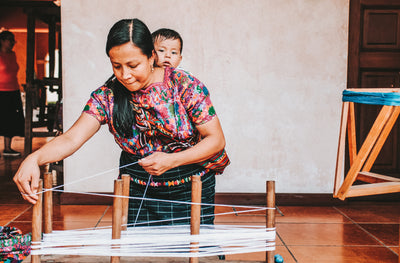
2 Setting up the warp
Using the thread on the devanadora, the weaver then wraps the thread around the posts on a device called a rastrillo. This creates the warp (or vertical thread) that will slip onto the rods that will be attached to the backstrap loom.
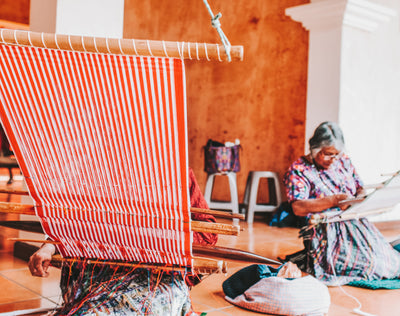
3 Transfer the thread
Transfer the thread from the rastrillo to the rods of the backstrap loom.
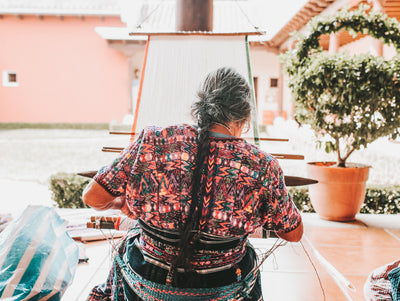
4 Attach the backstrap loom
The backstrap loom is then attached to a post or tree, and secured around the woman’s back. The pull between the post and the woman creates tension needed for the panel to be woven.
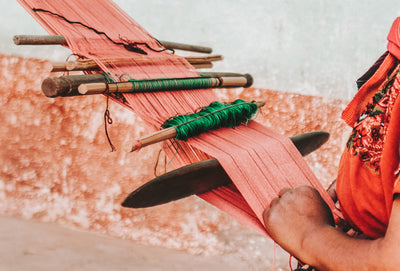
5 Add the heddle
The heddle is a tool used to separate the warp (vertical threads) for passage of the weft (horizontal threads).
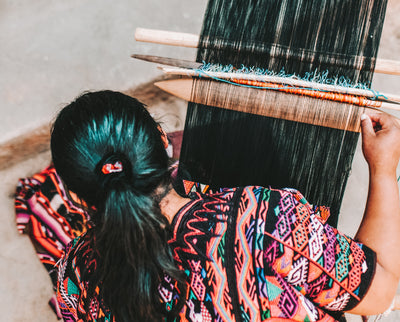
6 Add the Beater Rod
The beater rod is placed in between the thread that is split in half by the heddle. This rod is much thicker and sturdier than other rods being used in the process. When turned on its side it creates a large space for the weft shuttle to pass through. When the rod is laid flat it can be used to “beat” (or press) the thread towards the woman to keep the woven fabric as tight as possible.

7 Weaving the design
Once the backstrap loom is set up, it is then time to start weaving by passing the weft (horizontal threads) through the warp (vertical threads). Some designs use a weft shuttle to pass the thread back and forth until the panel is complete. However many designs are more intricate and require the weaver to go row by row individually looping the weft thread to create the design. Once a row is completed the weaver must tie off the back side of this design, and “beat” (or press) the row into place. Depending on the amount of detail, many of the panels take up to three days to complete.
Foot Loom

1 Wind the skeins onto spools
Thread for weaving is purchased in skeins (loosely coiled lengths of thread), and then placed onto a handmade device called a devanadora. The thread is then transferred onto smaller metal spools using a spindle, called a ruedina, which is usually made from a metal bike wheel.
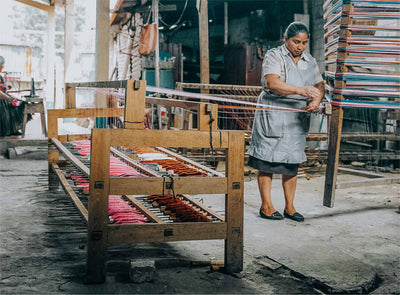
2 Organize the thread by color
The spools of thread are aligned by color on a long rectangular device called a cañonera, which helps organize the order of color required by the fabric design.
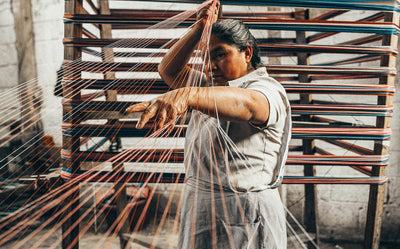
3 Sort the thread to create the design
The weaver then separates and organizes the threads piece by piece using her fingers and hands. Then she sorts the desired pattern onto another handmade spinning piece of equipment, called an urdidora, that stands taller than herself.
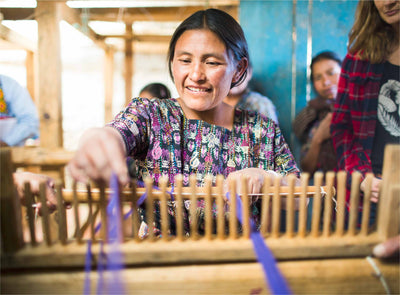
4 Determine the thickness of each section
The organized thread then goes through a piene (comb-like device) to determine the thickness of each section.
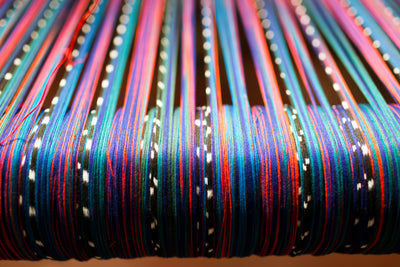
5 Mount the thread on the footloom
The thread is then mounted onto the footloom. It’s finally ready to weave!

6 Weave the thread into fabric
The foot pedals control the threads that move up and down as the weft (the horizontal thread) is passed through the warp (the vertical thread). The weavers work simultaneously with their hands and feet to create the fabric you see on the bags.